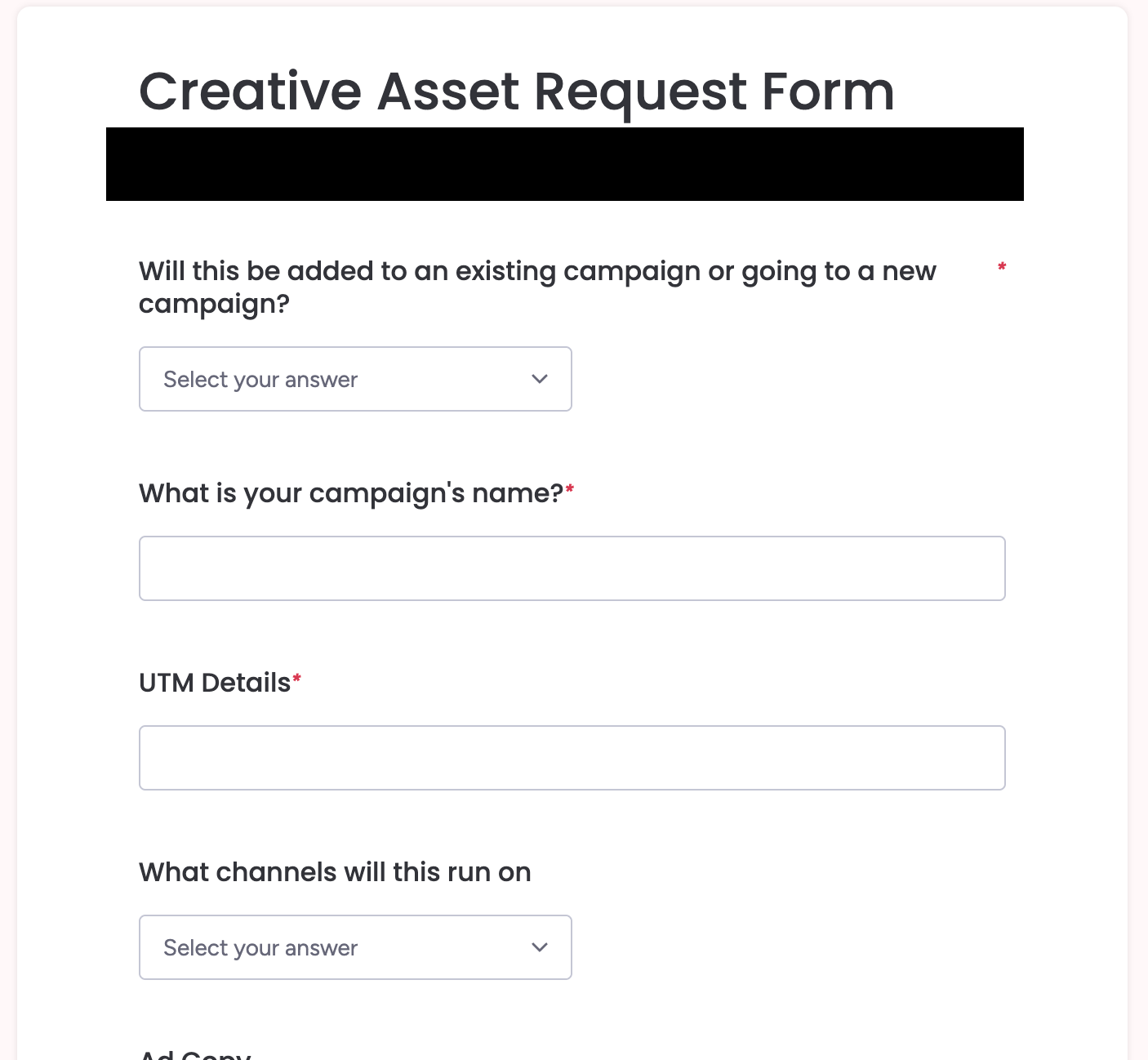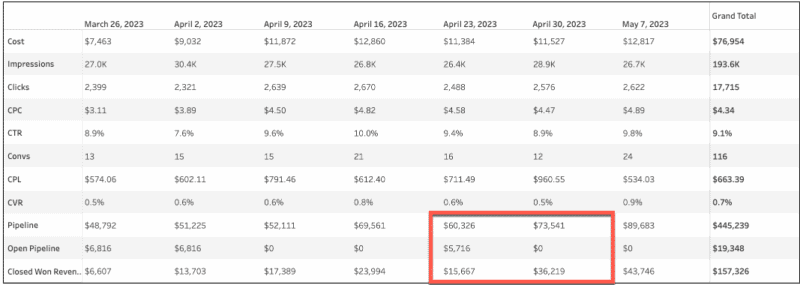Integrate with RevOps to drive campaign success. Understand sales processes and align tracking to convert digital marketing into revenue.
Imagine this: Your agency has created a clear and effective digital marketing plan. You have worked closely with the client, prepared all the necessary content, assets and targeting, and are confident about the potential success. However, there’s a slight issue — you forgot to consult with the revenue operations (RevOps) team. In short, you’ve done nothing at all.
For digital marketing agencies, driving campaigns is only half the battle. To fully deliver results and revenue for clients, close collaboration with internal RevOps teams is essential. Here’s why this partnership matters and how you can develop it.
Bridging the gap: Aligning digital marketing and revenue goals
Finding the right path for marketing success with your agency’s client begins by understanding their definition of success. This involves:
- Gathering details on their ideal customer profile (ICP).
- Familiarizing yourself with their martech stack.
- Knowing how they categorize and evaluate leads.
- Examining lead stages and conversion criteria.
- Establishing shared processes for both teams.
Understanding this simple yet crucial factor sets apart an effective digital marketing agency. It helps you meet your clients’ specific needs in their industry and the current market, enabling you to track performance properly, collect the right first-party data, and improve the revenue-generating potential of your campaigns.
For brands to maximize digital marketing and ensure sustainable growth in a world increasingly reliant on first-party data, successful agencies must closely align with internal client revenue operations teams. The savvy digital agency is the captain, and the client RevOps team is the navigator on a sea of potential revenue.
Clients benefit more when the agency thoroughly grasps their organization’s sales goals. This leads to a more strategic campaign optimization throughout the buyer funnel. Setting up your agency partner for success from the beginning yields efficient spend and improved outcomes for business objectives.
Here are key lessons from my agency career that have helped me form stronger relationships with clients and their internal teams in marketing, sales and RevOps.
1. Understand the intersection of digital strategy and revenue operations
To start, it’s crucial to grasp why this collaboration is necessary. As a digital marketing agency, your team excels in creating compelling campaigns, enhancing their scalability and understanding platform dynamics for optimal cross-channel results.
Your client’s RevOps team defines the success you are looking to drive, focusing on enhancing sales efficiency, refining processes and maximizing revenue generation.
Clearly outline the key revenue drivers at the beginning of the relationship. Failing to do so means generating leads without purpose, as the sales team may dismiss them without consideration.
To get a lead from that early and mostly useless stage into the preceding stages, MQL (also primarily useless), SQL, SQO, SAO and closed deals, you need to know:
- What kind of data you are tracking and how the flow of these leads looks like.
- How the RevOps team has the backend set up so you can feed them the correct information.
- What variables will change your leads’ value, job titles, what kinds of content leads are generated from, company size, industry, etc.
- What technology the client is using to enrich their data.
Bridging these domains creates a seamless flow where marketing efforts translate into tangible revenue based on the unique parameters set by each client.
2. Align the campaign and CRM inputs to RevOps goals, KPIs
Agencies must align their processes with the client RevOps team from Day 1 to begin fostering this white whale of a relationship. This means fully understanding all the information passed to the client’s CRM with every interaction.
For example, suppose the client is using Bizible/Marketo Measure. In that case, it is imperative that you fully understand how those technologies have been implemented to avoid classic mistakes like double counting that come from applying credit to multiple touchpoints across multiple channels.
If your client is using 6Sense, you may find that the RevOps team might be using 6Sense to qualify leads with the highest intent, and if they decide to change that, you may see a sharp decrease in MQLs. If you weren’t made aware of this change, you could waste hours looking for the source of that decrease when all it would have taken was a quick email.
One way to do this is to set yourself up on a shared document or project management software like Asana or Monday.com as soon as possible, where the RevOps team can outline what they will need from every campaign and set up forms that allow clients to input the campaign details that never change so that a predictable series of next steps comes with every new campaign.
Here’s an example:

Using forms like this makes it clear what you are looking for every time a new campaign request comes through
With a simple process like this, you can make sure the UTMs you are passing to the client align with what they are tracking in programs like HubSpot or Marketo, and they pass all of the proper data to other necessary programs like Salesforce.
Proper tracking future-proofs your campaigns for first-party data collection. This data can enhance machine learning through tools like Google’s Offline Conversion Tracking or Facebook’s Conversions API.
3. Foster collaboration, integration of data and insights
RevOps teams thrive on data-driven decision-making. Agencies can contribute significantly by providing valuable data and insights gleaned from marketing campaigns and using valuable first-party data gathered by RevOps teams.
However, before you can provide this data to your client’s satisfaction, you need to ensure that you are aligned on what KPIs you aim for, their definitions, and what might augment the value of each KPI. Use the data to guide your recommendations on this.
Perhaps once you’ve started collecting your data, you notice since your agency has been brought on, there has been a noticeable upward trend in your cost per lead like what you can see laid out here:

At first, this can be a scary prospect, but you need to look deeper than this. If you have been collaborating with your client’s rev ops team, this could be an opportunity to reach out and explore what the issue might be.
By adding additional available data to your reports for analysis, you could find that these results are not an issue. They are an opportunity.
Perhaps the leads you are getting are from larger company sizes that will lead to higher revenue or an increase in revenue potential, or the leads could be much more qualified than the leads you have been driving, which can inflate CPLs — and the former is exactly what happened in this case.

Utilizing existing communication channels, we worked with our client’s RevOps team to layer in the dimension of Closed-Won revenue. While exploring why ROI had increased, we found that some of our messaging resonated more with our Enterprise audience. With this insight, we doubled down on that messaging, which ultimately increased higher revenue deals being closed down the line.
Without connecting with the RevOps team to better understand the data we saw, we might have turned this campaign off or made changes with incomplete data. Instead, we used this insight to shift additional budget to this campaign and make optimizations that further improved revenue optimization the week of May 7.
Integrating digital marketing, CRM systems, automation tools and data analytics ensures a steady flow of accurate information. Maintaining open communication enables ongoing evaluation and iteration of processes for informed and efficient programs.
4. Ensure continuous communication and feedback loop
On a basic level, your client’s RevOps team should be consulted every time you run tests, make structural tracking changes or understand how their data integrates with the data on the platforms.
Regular meetings, joint strategy sessions and real-time feedback loops between agencies and RevOps teams foster a culture of collaboration. These interactions exchange insights, allow swift strategy adjustments and keep both parties aligned with internal strategy shifts and redefined sales priorities.
The synergy between agencies and RevOps teams extends beyond mere collaboration. It involves co-creation and continuous improvement. Joint brainstorming sessions, experimentation with new technologies and collaborative campaigns enable both entities to leverage each other’s expertise.
By iterating on strategies based on shared learnings and feedback, they can enhance customer experiences, fine-tune targeting approaches and drive revenue growth.
The path forward
Ultimately, the most successful partnerships between digital marketing agencies and RevOps teams stem from a unified approach toward a common goal: revenue growth.
By creating a proper process, understanding your goals, fostering open communication and iterating on strategies together, both entities can maximize the potential of digital marketing initiatives to drive tangible revenue results.
The relationship between agencies and their client’s RevOps teams will only get more critically important as 2024 brings us closer to a world without third-party cookies and the need for more first-party data use increases. You will want to ensure your teams can plow forward and crush your goals confidently.
The post Why agencies need to work closely with client RevOps teams appeared first on MarTech.
(13)
Report Post







